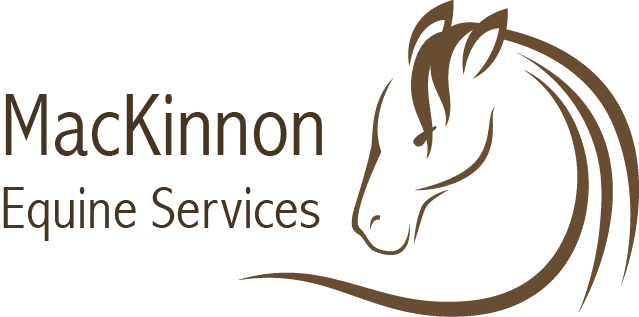| Abnormality |
|
What It Is |
How It Forms |
Problems Caused |
The Fix |
| Dorsal curvature (frown) |
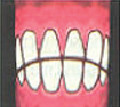 |
Outer edges of the upper incisors grow long relative to the outer edges of the lower incisors. |
May be a natural occurrence for your horse. Can occur when deciduous caps are retained on the lower corner incisors, preventing normal growth of permanent incisors. Can occur due to abnormal grinding patterns secondary to molar misalignments. |
Inhibits jaws’ normal side-to-side grinding. |
Incisors are filed using a motorized or hand file to keep them level. In extreme cases, long outer edges of upper incisors are cut using a motorized diamond-wheel saw. |
| Offset (diagonal bite) |
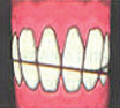 |
Upper incisors on one side of the mouth are very long, and lower incisors on the opposite side are very long, causing incisors to meet on a diagonal, rather than on a straight line. |
May develop over time if your horse has a tendency to chew in one direction only. May occur secondary to molar misalignments, or as a result of missing incisors. |
Inhibits jaws’ normal side-to-side grinding. |
Incisors are filed using a motorized or hand file to keep them level. In extreme cases, long upper and long lower incisors are cut using a motorized diamond-wheel saw. |
| Overbite |
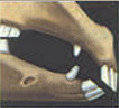 |
Upper incisors protrude over the front of lower incisors. |
Your horse may’ve been born with an overbite. Hooks or ramps on the front upper or back lower molar can also shift the upper jaw forward, resulting in an overbite. |
Prevents jaws from moving freely. The longer an overbite remains uncorrected, the more severe it may become because corresponding hooks, ramps, and transverse ridge will become more pronounced, pushing the lower jaw even farther back. |
Correct corresponding molar abnormalities and reduce (cut) upper row of incisors using a motorized diamond-wheel saw. |
| Underbite |
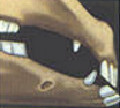 |
Lower incisors protrude over the front of the upper incisors. |
Your horse may’ve been born with an underbite. Hooks or ramps on the front lower or back upper molar can shift the lower jaw forward, resulting in an underbite. |
Prevents jaws from moving freely. The longer an underbite remains uncorrected, the more severe it may become because corresponding hooks, ramps, and transverse ridges will become more pronounced, pushing the lower jaw even farther forward. |
Correct corresponding molar abnormalities and reduce (cut) lower row of incisors using a motorized diamond-wheel saw. |
| Missing Incisor |
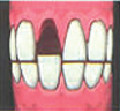 |
A front tooth is missing. |
Your horse’s teeth may be lost during a traumatic event, or may never erupt due to a congenital abnormality. |
Corresponding tooth on the opposite jaw will overgrow, and eventually prevent the jaws from sliding freely side to side. Incisor misalignment makes it difficult to grasp and tear pasture forage. |
Keep opposite row of incisors level by filing them regularly using a motorized or hand file. If opposite incisor has already overgrown excessively, it can be cut prior to filing. |
| Other |
|
What It Is |
How It Forms |
Problems Caused |
The Fix |
| Wolf Teeth |
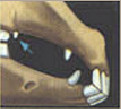 |
Small, shallow rooted teeth at the front of the upper molar arcade. Wolf teeth rarely occur at the front of the lower molar arcade. |
A normal finding in many horses, but may not appear or may be lost spontaneously. |
Interfere with the bite. May actually break off below the gum line and become loose, causing discomfort. |
Wolf teeth are easily removed, ideally before 2 years of age. |
| Retained Caps |
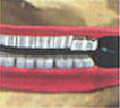 |
Deciduous teeth, often called “baby” teeth aren’t lost at the appropriate time. |
A normal occurrence in some horses. May be related to uneven wear due to molar/incisor misalignments. |
Retained caps prevent normal wear of underlying adult tooth. Corresponding adult tooth on the opposite jaw may overgrow, resulting in molar ramps, steps, or waves, or incisor misalignments. Caps can cause discomfort. |
Caps are easily removed at appropriate time if they aren’t lost spontaneously. |
| Rotten Teeth |
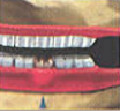 |
Teeth become rotten or infected. |
Arises due to trauma; abnormal wear over a long period of time; or old age. |
Chronic infection that can lead to general health problems. May lead to tooth loosening and eventual loss. May lead to infections in the sinus where tooth root sits. |
Rotten or loose teeth are usually removed. This can be done standing in some cases, but may require general anesthesia and surgical removal. |








